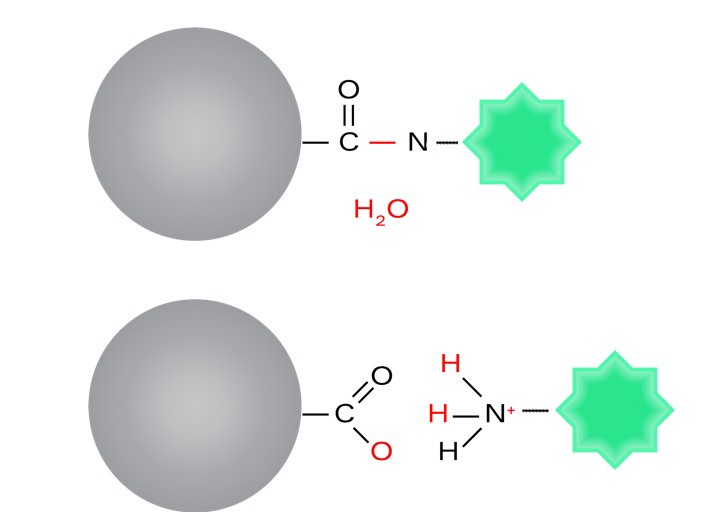Why We Don't Offer Dyed Silica
Posted: July 15, 2019
In the previous blog, Refractive Index and Small Particle Analysis, we discussed some of the reasons why people want to employ silica nanoparticles as calibrators when analyzing extracellular vesicles on the flow cytometer. So, why don’t we offer a fluorescent silica calibration kit?
Well, the reason is twofold. First, silica cannot be dyed using the same method that is used for dyeing most polymer beads, i.e. solvent swelling / dye entrapment. Silica is essentially glass, and the matrix cannot be swollen by solvents. Second, even though fluorophore could be attached to the silica particle surface, most fluors are small (< 1000Da) synthetic molecules that would be attached to the silica matrix via a single reactive group. The silica surface is highly hydrophilic, and such single point attachments are susceptible to hydrolysis in aqueous systems, which means loss of fluorophore / depletion of fluorescence (or instability of the calibration bead, which would be unacceptable).
So, what calibrators are available? Our Small Bead Calibration kits, featuring fluorescent polystyrene particles, are used extensively in the preparation of technicians, instruments, and processes for nanoparticle analysis. See how it’s done, here. We also manufacture undyed silica (150nm+) and streptavidin-coated silica (500nm+) that may be used as standards for setting size gates—undyed, if fluorescence triggering isn’t required, and (in the case of streptavidin silica), labeled with an appropriate biotinylated fluorochrome if fluorescence is required.

